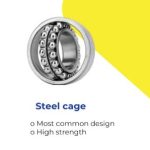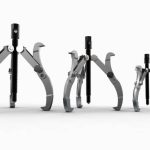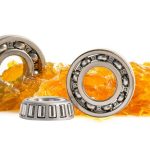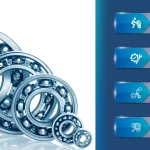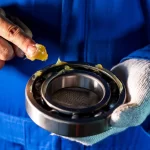When working with heavy machinery and industrial equipment, proper mounting and dismounting of bearings are crucial practices that can significantly impact the performance and longevity of the bearings, as well as the machines they support. Effectiveness of bearings is heavily dependent on how they are installed and removed. Incorrect handling can lead to premature bearing failure, resulting in costly equipment downtime and repairs.
Are there Consequences to Improper Handling of Bearings?
Yes. Improper handling of bearings during mounting and dismounting can have severe consequences on the performance and reliability of both the bearings and the machinery.
- Incorrectly mounted bearings cause improper alignment, this does not sync well with the shafts or housings, leading to uneven load distribution, increased friction, and excessive wear. Over time, such recurring misalignment causes friction causing the bearing to overheat, degrade, and ultimately fail prematurely.
- Similarly, brinelling of bearings cuts down bearing shelf life significantly. Brinelling happens when there are dents on the face of the bearings due to improper force. This surface loss is further heightened when exposed to contamination, dirt or debris, and poor handling. This accelerates the risks of downtime and cost of maintenance.
- While dismounting proper care will ensure the reusability of the components. Therefore applying excessive force or using inappropriate tools for dismounting can result in physical damage to the bearing surfaces, seals, or internal components. The damage looks insignificant but has a lasting impact on bearings which significantly shortens the bearing’s lifespan. Additionally, it will also affect the overall safety and efficiency of the machinery, which increases the factory floor hazards.
What are the benefits of Correct Handling Practices of Bearings?
- Correct handling optimises the bearing functionality by making way for smooth rotation, minimal friction, and efficient load transfer.
- Assured enhancement of equipment reliability, since premature failure of bearings are reduced.
- Cuts down on the need for frequent maintenance and bearing repairs.
- Extends bearing service lives and reduces frequency of replacements.
- Ultimately, lower maintenance costs and equipment downtime, allowing for uninterrupted production and operation.
Due to all the above benefits it is easy and safe for the factory floor personnel to handle their equipment better without the likelihood of encountering accidents or injuries when using the correct tools and techniques, ensuring a safer working environment.
Best Practices for Bearing Mounting
Correctly mounting bearings in itself is a meticulous process that requires attention to detail and adherence to specific steps. The following best practices can help ensure that bearings are mounted correctly and perform optimally:
- Preparation: Just like any other setup, prior to mounting a bearing, it is necessary to prepare the bearing and its components beforehand. This involves cleaning the bearing, shaft and housing, to remove any contaminants that could adversely affect bearing performance.
- Alignment: Once prepared, the bearing components now need to be duly aligned. Proper alignment with the shaft and housing ensures even load distribution and smooth operation without any risk of friction or overheating. Ensure that the bearing is positioned correctly and that the shaft and housing are aligned as per their specifications. Refer to the NBC Bearings manufacturer’s guide on these matters.
- Lubrication: Adequate lubrication is a must as it will single handedly reduce friction and prevent wear. Apply the appropriate type and amount of lubricant, as any case of over-lubrication or under-lubrication can lead to bearing failure. Knowing the right amount comes with practice over time.
- Tightening: Now that there is enough mobility and the components are where they should be, it is time to put them all together as a unit. Use the recommended torque values when tightening bolts, nuts, or other fasteners during the mounting process. Over-tightening can cause deformation of the bearing, while under-tightening will provide insufficient clamping force.
- Avoiding Damage: Above all avoid any careless handling. Handle the bearing carefully while mounting to avoid physical damage to its surfaces, seals, or internal components. Use the correct tools and techniques to minimise the risk of damage.
Tools and Techniques for Bearing Mounting
The use of specialised tools and techniques is essential for the proper mounting of bearings.
- Bearing Heaters: Bearing heaters are used for the hot mounting of bearings. By hot mounting we ensure that the bearing has a natural snug fit. By applying heat the bearing expands, allowing it to slide easily onto the shaft. Once cooled, the bearing contracts, and naturally creates a tight fit around the shaft.
- Hydraulic Presses: Just the opposite of heating is the use of hydraulic presses for cold mounting. Here the bearing is first pressed onto the shaft using controlled force then tightened. This method ensures precise alignment and even distribution of force.
- Mounting Sleeves: Mounting sleeves protect the bearing from any kind of damage during its installation. Force is applied evenly across the bearing’s inner or outer ring, in order to prevent deformation.
- Cold Mounting: Similar to the use of hydraulic press, cold mounting technique is suitable for smaller bearings or situations where heating is not feasible.
Safety Considerations
Safety is a critical aspect of bearing mounting and dismounting. Technicians must follow safety protocols and wear appropriate personal protective equipment (PPE) to minimise the risk of accidents and injuries. Potential hazards include flying debris, burns from heated bearings, and injuries from the use of hydraulic presses or other tools.
To ensure safety, technicians should receive proper training on bearing handling procedures and the use of specialised tools. Regular safety audits and inspections should be conducted to identify potential risks and implement corrective measures.
FAQ's
What is the mounting of a bearing?
Mounting of a bearing refers to the process of installing the bearing onto a shaft or into a housing.
What is the method of dismounting the bearing?
Dismounting a bearing involves safely removing it from the shaft or housing, often using tools like pliers or hydraulic presses.
What are the 4 ball bearing mounting methods?
The four common methods are press fit, shrink fit, adhesive bonding, and interference fit.
What are mounted bearings used for?
Mounted bearings are used to support rotating parts and reduce friction between moving components.
What are the three types of mounted bearings?
The three types are pillow block, flange, and take-up mounted bearings.
What are the various bearing mounting methods?
Common methods include press fit, thermal expansion (heating), hydraulic mounting, and using specialised mounting tools.




